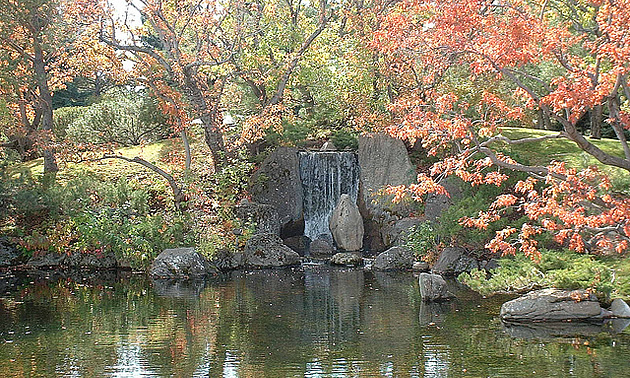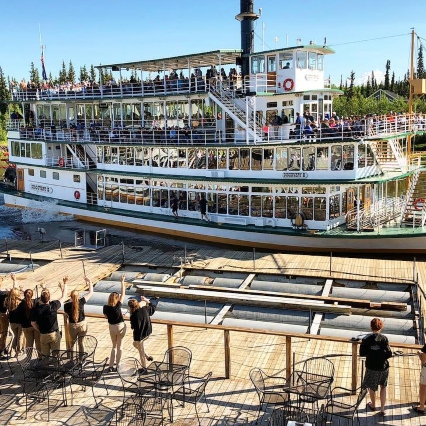Top things to see and do in Lethbridge
Lethbridge may be a place you travel through to get to somewhere else but there is a lot to do and see

Lethbridge is Alberta’s fourth largest city; about one hour north of the USA/Canadian border crossing at Coutts and about one hour east of the Rocky Mountains. It is infamous for two things: the wind and the railway bridge that crosses the Old Man River—but Lethbridge has fantastic Nature Trails and a rich history that colours the whole community.
Nature trails
Lethbridge is built along the banks of the Old Man River where networks of Nature Trails traverse the coulees and lead down to a 196 acre Nature Reserve and Indian Battle Park. There are an abundance of diverse flora and fauna and the Helen Schuler Nature Centre offers self-guided tours throughout the whole year.
Fort Whoop-Up
The city grew up on the whiskey trade, coal mining and the railway. A full-sized replica of Fort Whoop-Up (now a National Historic Site) sits in the Indian Battle Park adjacent to the Old Man River. Originally Fort Whoop-Up was built as Fort Hamilton and located about eight miles downstream at the junction of the St Mary’s and the Belly Rivers (now called the Old Man).
The story goes that Fort Hamilton was renamed Fort Whoop-Up because of the notorious whiskey trade that flourished there in the 1860s and '70s. First Nations people and fur traders were known to go there to test the “fire-water” and “whoop it up.” In the mid-1870’s, The North West Mounted Police came to Fort Whoop-Up to ensure peace and reinforce Canadian sovereignty. There are year-round guided tours there, and incredible reenactments of life in the Fort take place in the summer.
Coal
Coal was critical to the development of Lethbridge. The First Nations people always recognized the value of the "place of the black rocks" ("Sik-okotoks" in the Blackfoot language), but commercial coal mining was not started until the early 1870s.
At that point, Lethbridge was called Coalbanks, but it later was named after William Lethbridge, the first president of the North Western Coal and Navigation Company in 1882.
The railway
Coal mining and the railway are inseparable. At first they barged the coal down the river to Medicine Hat, but the river proved too unpredictable, and a narrow-gauged railway was build. Construction of the Lethbridge Viaduct (the High Level Bridge) started in 1906 and was completed in 1909—it was the longest, tallest railway bridge of its type in North America, over a mile long and over 200 feet high.
The first train crossed on June 23, 1909, and to this day you can still watch the trains crossing over from one side of the coulee to the other. Today the trains are so long the engine reaches one side before the last car leaves the other side. Lethbridge celebrated the 100th year of the bridge by lighting up the steel support towers.
Nikka Yuko Japanese Garden
Many Japanese who were relocated to Southern Alberta from the coast during the Second World War settled in and around Lethbridge. The Nikka Yuko Japanese Garden was built in 1967 and expresses the merging of Japanese and Canadian culture in a garden rich in symbolism (Ni from Nihon, meaning Japan, ka from Kanada or Canada, and Yuko, which translates as "friendship" to mean “Japan-Canada friendship.”) The gardens are both beautiful and serene. It a great place to go to just sit and enjoy the peace and tranquillity.
Historical building makeovers
The Galt Museum is housed in the old Galt Hospital that was built in 1910. It accommodates an ever-growing collection of artifacts, memorabilia and archives and offers a great variety of interesting programs. There are stories that the building is haunted by previous patients.
The Bowman Art Centre used to be Bowman School (I took Grade 2 there).
Be sure to visit the Southern Alberta Art Gallery. In 1922, this building was opened as a library and lecture room. Then it housed the Lethbridge Board of Trade until 1944, when Walter Gurney opened Lethbridge’s first museum. It was a private museum that had collections of strange odds and ends. The first exhibit of Southern Alberta Art Gallery opened in 1976.






